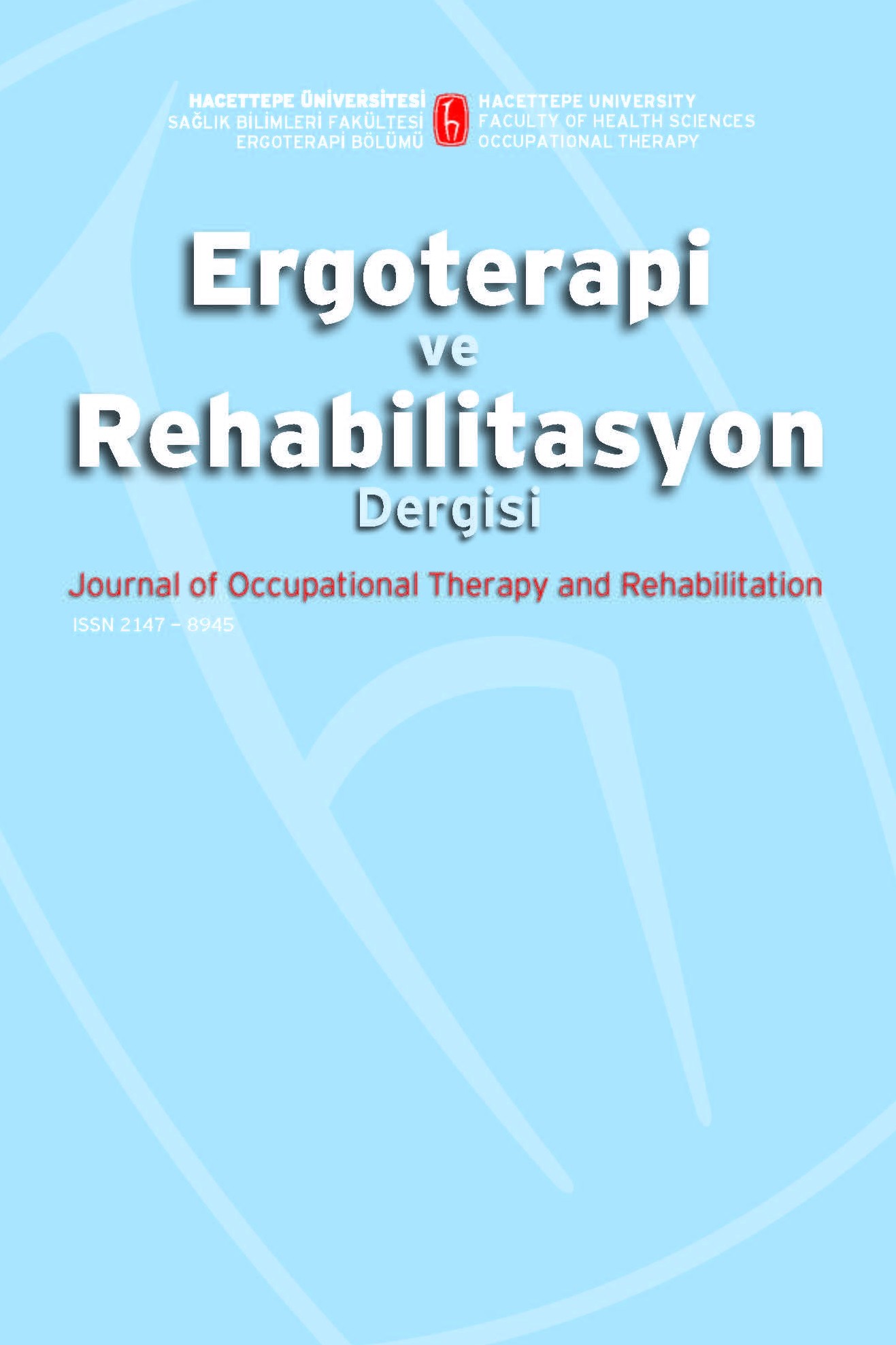Huzurevinde Çalışan Bakım Verenlerde Bel Okulunun Etkinliğinin İncelenmesi
Amaç: Bu çalışma huzurevinde çalışan bakım verenlere verilen bel sağlığı eğitiminin bel sağlığı farkındalığına etkisini incelemek amacıyla yapıldı. Gereç ve yöntem: Katılımcılara, araştırmacılar tarafından hazırlanan yapılandırılmış görüşme formu ve sosyodemografik bilgi anketi uygulandı. Bel okulu, bel bölgesinin mekaniğinin öğretilmesi, bel problemlerinin nedenleri, tedavi yaklaşımlarının amacı konusunda bilgi verilmesi, bel problemlerinden korunma tekniklerinin ve ergonomik bilgilerin öğretilmesini içeren teorik ve pratik 4 dersten oluştu. Eğitimden 6 hafta sonra aynı değerlendirmeler uygulandı. Sonuçlar: Çalışmamıza 20 kadın (83,3) ve 4 erkek (16,7) olmak üzere toplam 24 kişi dahil edildi. Yaşlı kişiyle birebir çalışırken “belinizi koruma yollarını biliyor musunuz?” sorusuna bakım verenlerin eğitim öncesi 37,5’i evet derken, eğitim sonrası bu oranın 83,3’e yükseldiği ve bu sonucun istatistiksel olarak anlamlı olduğu bulundu (p= 0,009). Yaşlıya günlük bakım yaparken “vücut mekaniğinizi doğru kullanıyor musunuz?” sorusuna eğitim öncesi evet diyenlerin oranı %37,5 iken eğitim sonrası %75 olduğu, bu farkın istatistiksel olarak anlamlı olduğu tespit edildi (p= 0,023). Tartışma: Bel okulu ile farkındalık oluşturma yönteminin, katılımcıların aktif katılımını sağlaması, uygulamalı eğitimi içermesi, maliyet açısından pahalı materyaller gerektirmemesi nedeni ile huzurevlerinde kullanılabilecek faydalı bir yöntem olduğu düşünülmektedir
Anahtar Kelimeler:
Bel, Bakıcılar, Bakımevleri
The Investigation of Effectiveness of Back School in Caregivers Working in Nursing Home
Purpose: The aim of this study was to evaluate the effect of back health training provided to nursing home caregivers on back health awareness. Materials and Method: A structured interview form and a sociodemographic information survey prepared by the investigators were administered to the subjects. The back school consisted of 4 theoretical and practical lectures and included back region mechanics, reasons of back problems, the aim of treatment approaches, back problem prevention techniques and ergonomic information. The same evaluations were performed 6 weeks after the training. Results: Totally 24 individual; 20 women (33%) and 4 men (16%) were included.The positive reply rate to the question “Do you know how to protect your back when working one-on-one with the elderly?” increased from 37.5% before the training to 83.3% after training and the increase was statistically significant (p= 0.009). Similarly, 37.5% of the caregivers replied “yes” before the training when asked “Do you use your body mechanics properly when caring for the elderly?” but the rate again increased in a statistically significant manner to 75% after the training (p= 0.023). conclusion: We believe this method of creating awareness through a back school can be beneficial in nursing homes as it ensures active participation, contains practical therapy and requires no expensive material
Keywords:
Low Back, Caregivers, Nursing homes,
- ISSN: 2147-8945
- Yayın Aralığı: Yılda 3 Sayı
- Başlangıç: 2013
- Yayıncı: Hacettepe Üniversitesi Sağlık Bilimleri Fakültesi
Sayıdaki Diğer Makaleler
Demanslı Hastaya Bakım Veren Aile Bireylerinin Aktivite Performanslarının İncelenmesi
Huzurevinde Çalışan Bakım Verenlerde Bel Okulunun Etkinliğinin İncelenmesi
Hatice ABAOĞLU, Gamze EKİCİ, Yasir ŞAFAK, Esra AKI
Görme Keskinliği ile Fonksiyonel Denge Arasındaki İlişkinin İncelenmesi
Meral HURİ, Banu Altunay ARSLANTEKİN, Onur ALTUNTAŞ, Esra AKI
